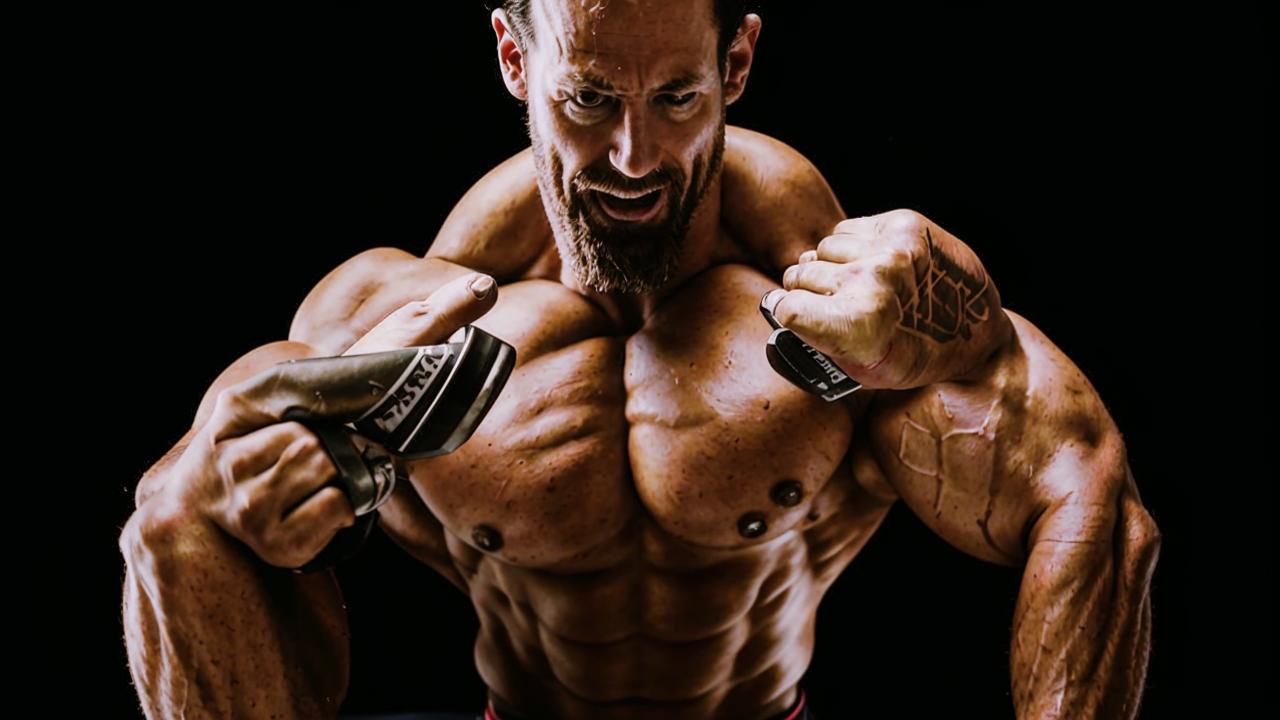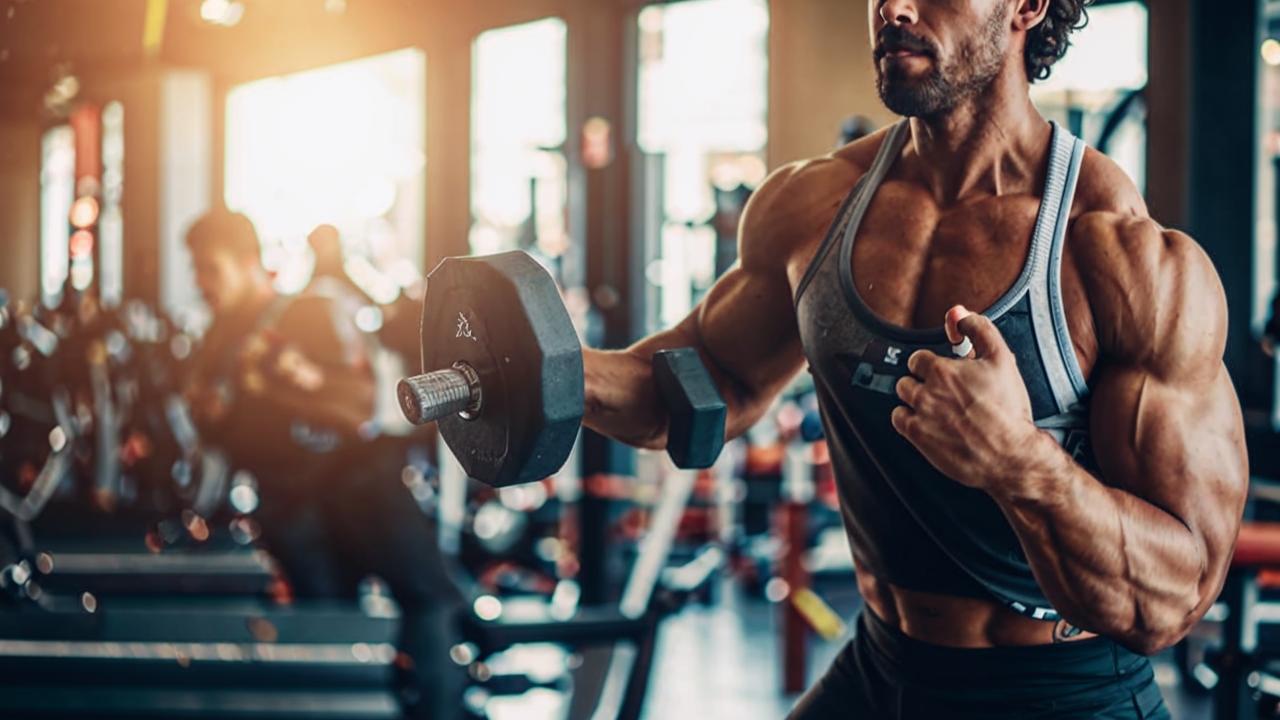Bodybuilding has long been surrounded by a huge number of myths and stereotypes. The “couch army” accuses those who spend hours building muscle in the gym of being “overpumped” by steroids and chemistry, not believing that results can be achieved in other ways.
The main fear of young people who come to the gym is related to the fact that intensive work on their bodies and preparation for bodybuilding competitions will inevitably lead to health problems. Let’s look into the intricacies of this issue.
So if in your childhood you had a poster with Arnold Schwarznegger on your wall, and your plans have long been “to buy a subscription to a fitness gym”, stop looking for excuses and start right now. And “Championship” will support your endeavor and help to understand the myths and misconceptions of society regarding the bodybuilding movement.
Crocus Fitness sports doctor Vladislav Ogarkov shared his expert opinion with us.
Myth 1: Cardio training burns muscles

During the wave of popularity of high-intensity interval training, many people gave up classic cardio exercises on a treadmill or exercise bike, believing that such activities only burn muscles. You will be surprised, but there is not a grain of truth in this.
Moreover, scientists recommend to start training with low-intensity loads to strengthen the cardiovascular and respiratory systems. And afterwards, when you can easily handle a 30-minute session at a medium pace, you can add high-intensity methods.
Studies prove that the combination of aerobic exercise and strength training does not prevent you from increasing your mass. And for some test subjects, it even helped them gain more muscle.
Professional athletes assure that the decrease in volume after cardio is only a reduction in fat layer, and you should not worry about your muscles.
Myth 2: It is safe to pump up with steroids and not work in the gym.

In fact, this statement is only partially a myth. In fact, studies have proven that steroids affect muscle growth even without working out.
In an experiment by a group of scientists led by Shalender Bhasin, men with low levels of fitness were divided into four groups. During the experiment, which lasted ten weeks, the first group used a placebo without training, the second group also did without exercise, but they were given weekly injections of testosterone enanthate in a higher dosage. Participants of the third group emphasized strength training and took a placebo, while the last group both actively trained in the gym and received steroid injections similar to the second group.
As a result – the biggest mass gain was found in the latter link, which was expected. However, in second place were the participants from the second group, who used steroids without additional physical activity. The third were the wards training without drugs.
But it is worth noting that using steroids will not have a positive impact on your health, so, anyway, such methods should not be considered safe… When taking such drugs, it is especially important to take care of the liver.
For example, you can further protect your liver with drugs to improve its work, such as Hepa-Merz in granules. It has a detoxifying effect, helps to improve protein metabolism, reduce chronic fatigue syndrome. In the future, such therapy can help in your workouts and increase the endurance of the body.
Myth 3. All bodybuilders are on steroids

Competitive bodybuilding is closely related to the topic of pharmacology. This does not mean that all competitive athletes use drugs to support their training. However, it would be foolish of us to say that they do not.
It is possible to quickly build good muscle mass without pharma. The use of anabolic drugs allows you to take on a slightly larger volume of loads and reduce the time needed for recovery. Training without support, you should focus on completely different volumes, so we do not advise you to completely repeat the training of people who train with the use of steroids. Nevertheless, it is more than realistic to gain similar muscle volumes. Professionals advise a natural athlete to engage in a program of three workouts per week, focusing on basic exercises.
Vladislav Ogarkov, sports doctor at Crocus Fitness: “According to scientific research, it is the prohibited hidden ingredients (steroids, hormones, amphetamines) that are most often the cause of health damage when consuming sports nutrition. It is a common practice to add anabolic steroids explicitly and implicitly to bodybuilding sports supplements. This is done to provide a quick ‘wow effect’ in building muscle mass and losing weight.”
One scientific report notes the diagnosis of severe liver damage and hepatitis in 44 young athletes. The researchers attributed the cause to anabolic steroids, which were contained in sports supplements taken by athletes in a hidden form, i.e. they were not explicitly stated on the packaging.
Myth 4: Girls turn into men in bodybuilding

Many female bodybuilders believe that public opinion of them is tainted by those who sacrifice their health to win fitness bikini contests. They separate themselves from this culture and assure that they are promoting the healthy, natural beauty of a fit female body.
Just look around in the gym and you’ll realize that even men find it difficult to pump up, let alone women, who have 15 times less testosterone.
For example, one study included healthy women from 24 to 32 years old who were forced to train for an hour and a half five times a week for six months. The strength exercises in the program were combined with cardio training. During this time, their muscle mass increased by about 2%. Of this, most of it was in the legs, a little less in the trunk muscles, and virtually nothing in the arms. Fat mass decreased by almost 10%, which went from the arms and torso. The legs, meanwhile, remained the same. On average, women’s muscles weigh about 43 kg, while men’s figures are 63 kg. Meanwhile, women’s bodies, on average, have 25 kg of fat, while men have 15 kg.
That is, if an average woman wanted to have the same body composition as a man, she would have to lose about 40% of fat. And if among her desires – to pump up like a man, the girl will have to increase muscle mass by 147%. And this despite the fact that for six months of hard training women “pumped” a little more than 2%. The conclusions are self-evident. Therefore, to preserve women’s health, it is necessary to take into account all the above factors and do not set unrealistic goals.
Myth 5: Sports nutrition is harmless to health

Protein is an essential food component that is necessary for body and muscle growth. Your skin, nails, hair and blood cells also need regular protein intake from food.
However, consuming protein powder to increase your workout performance may not always have a positive effect on your health. Despite recommended guidelines of 1.6-2.2 grams per kilogram of body weight per day for athletes, most of those who train in the gym far exceed these numbers. Constant consumption of sports nutrition and the prevalence of a carbohydrate-free “drying” diet leads to increased levels of the body’s protein synthesis product, ammonia. This increase is toxic to the liver and brain. There is a high risk of developing liver failure. Therefore, it is important to keep ammonia levels under control by reducing excessive consumption of sports nutrition or by using drugs that reduce ammonia. Such preparations include products containing the amino acids L-ornithine and L-aspartate.
Vladislav Ogarkov, sports doctor of Crocus Fitness: “High-protein diet leads to an increase in the level of certain liver enzymes (transaminases),which is an indicator by which various diseases are diagnosed. Two cases of liver damage have been described in the scientific literature in two fitness patients consuming high-dose sports protein. Both were hospitalized with severe abdominal pain, elevated blood transaminases and hypoalbuminemia. After discontinuing protein use, the values returned to normal.”
Myth 6: Jocks take much longer to recover

For workouts to be effective, muscles need time to rest and recover between workouts. But how do you know how long it takes?
Many factors affect muscle recovery time:
- your age;
- your genetics;
- the characteristics of a particular muscle group;
- your training program;
- stress level;
- amount of sleep;
- liver condition;
- medications.
Many people think that the bigger the muscles, the longer it will take them to recover. But the opposite is true. As a rule, the more trained an athlete is, the less time he or she needs between workouts. Muscles get used to this regimen and recover much faster.
But it is often the case that athletes may feel tired, lethargic and have poor recovery between workouts. These symptoms can be the cause of improper liver function and elevated blood ammonia levels. To find out if your liver needs a toxin cleanse, take a free test at testliver.rf. “The Number Connection Test” can help you suspect possible liver problems and elevated ammonia levels. Remember that any workout should be monitored for your basic health indicators.
Contraindications are available. A specialist should be consulted.






